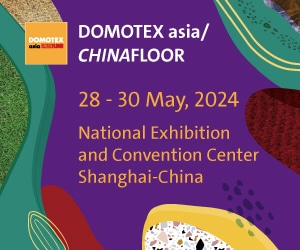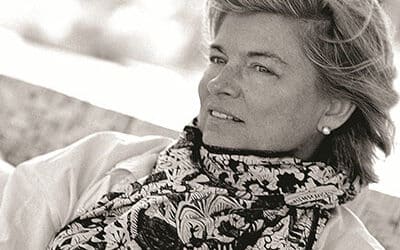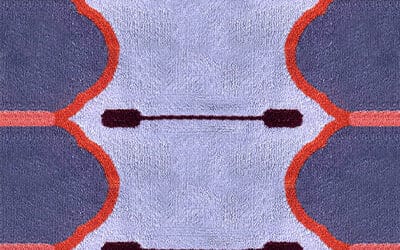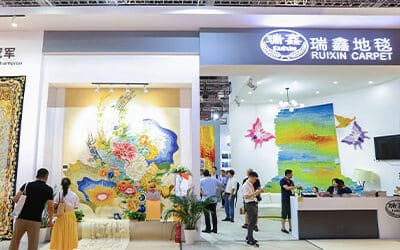Marcella Echavaria takes us on a journey to the island of Mallorca, where Jaume Danús and Antoni Esteva have created a hotel spa with a creative and ecological difference.
Es Raco d’Artà is a unique type of oasis in the town of Artà, an enclave with a particular history in the island of Mallorca, Spain. It is, in fact, the longed-for Mallorca and a dream realised in the truest sense of the expression.

During the Muslim era, this was a place to guard the beaches from possible invasions by sea. Legend tells that in large Spanish families, women were given land near the ocean as inheritance while men kept the areas inland for agriculture, husbandry and textiles. With the tourism boom that started in the 1950s, women´s luck turned and everyone flooded the coastline, abandoning the central areas.
Two lifelong friends, Jaume Danús and Antoni Esteva, saw the potential of this abandoned 185-hectare farm from the 13th century and turned it into a natural reserve. Esteva is an architect and multi-disciplinary artist with projects such as Son Gener, Convent de la Missio, Canyamel, Sa Pleta de Mar, Shelter Fetget, and Vana Retreat under his belt. Danús is a well-known architect and master builder. The duo share a love of Mallorca and their long-term vision for the land was not to create another hotel but rather a project that brings back tradition and richness to the island, reinvesting all profits into a large-scale agricultural project.

The farm extends over mountains and forests of oak, wild olive, carob, pine and the occasional cypress. The cultivated land houses a 14-hectare organic vineyard, about 1,200 olive trees, 200 different fruit trees, a field of native Xeixa, a 2,000 m2 organic garden and an aromatic herb garden.
The project took ten years because of Danús and Esteva’s commitment and philosophy: focusing on nature first and a deep respect for the landscape. Everything had to be recycled and made using local techniques and local products. The planning of the project was directed by the landscape following the direction of the natural light and making sure the feeling of isolation could be kept throughout the property. The roofs, for example, were curved to provide a natural isolation, while walls were whitewashed. Not a single tree was cut, old stones were used throughout and the energy is solar.

The journey starts upon reaching the property. There is no access by car so guests are picked up in carts and taken on a two-kilometre trip through vineyards, lush pastures, almond trees, and citrus and olive groves. Experiences on offer here include personal journeys whether through detox, silence, nature or the tactile environment.
There is no lobby, but a welcoming farmhouse. Staff wear clothing by Esteva’s daughter, Rosa Esteva, the force behind fashion brand Cortana, whose textures are present everywhere. Her signature style is characterised by feminine relaxed silhouettes that recall her passion for contemporary dance with prints based on her own watercolours. Her collections distill a personal Mediterranean aesthetic and will very soon be made on the island following artisanal processes and hopefully using native materials again.

‘The main materials used for the project are earth, stone, cane, wood and a lot of lime,’ comments Danús. The new construction was built to fit harmoniously into its natural setting. The result is a space surrounded by mountains with all possible comforts and views of Artà and Sant Salvador. To relax the body and mind, various treatments are offered in the Sanum per Aquam and in the pool area. Meditation and yoga also have their special spaces.
‘My inspiration was nature. Nature and silence,’ explains Esteva, responsible not only for
the architectural aspects, but for almost the entire project including his extraordinary art pieces which are placed in some of the rooms and social areas. ‘We wanted to provide tools and guidelines for people to live a more conscious way of life.’

The spaces are minimal, rustic and warm with a sense of rural nostalgia. Different textures are present everywhere in carefully curated art pieces. A large tapestry in the dining room is made with local fibres by Adriana Meunié. ‘Mallorca is a whole world,’ Esteva goes on to say. ‘With so much travelling around I think we have lost the feeling of belonging to a place, that’s why we don’t really care where we are or where we go; we are simply passengers. The only way to be able to contribute positively to a place is by getting to know it, asking questions, spending time, respecting the local inhabitants and their ways of living. That is why I am happy to be here, where I was lucky enough to be born. I try to reclaim raw materials as the basis for developing future craft, design or industry projects.’
Es Raco d’Artà is a place to reconnect, to go back, to reclaim, to gain strength and wisdom rooted from nature from a blessed land.




